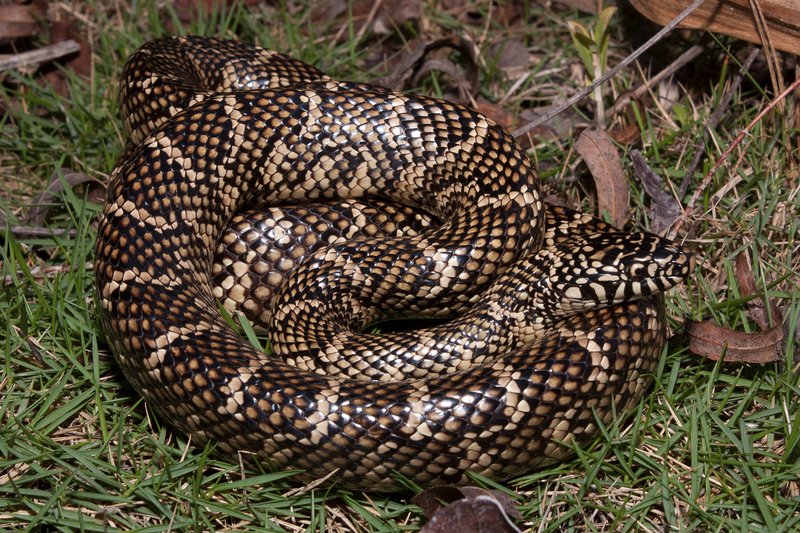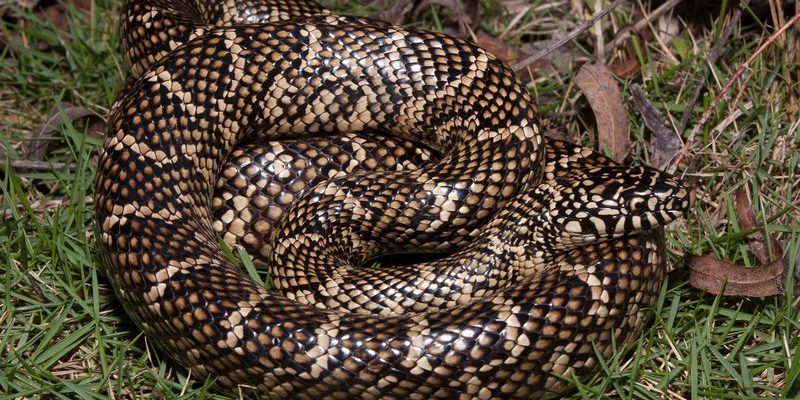
When you think of snakes, what comes to mind? Perhaps a slithering creature hiding in the grass or basking on a warm rock. Now, let’s talk about the Brooks Kingsnake. This stunning serpent is not just another snake; it’s a true marvel of nature. With its vibrant colors and striking patterns, it’s like the fashionista of the snake world!
But there’s a lot more to this snake than just good looks. The Brooks Kingsnake is a fascinating creature with unique behaviors and characteristics that make it a standout in the world of reptiles. Whether you’re a snake enthusiast or a casual nature lover, this article will take you on a journey through the life and habitat of the Brooks Kingsnake. So get comfy, and let’s slither into the details!
Physical Characteristics of the Brooks Kingsnake
The Brooks Kingsnake is known for its beautiful appearance. These snakes typically measure between 3 to 4 feet long, although some individuals can reach lengths of up to 6 feet. They have a slender body that makes them both agile and graceful. Their skin can exhibit various colors, but they are predominantly black with bold yellow or white bands running across their bodies. This striking coloration serves a purpose, as it helps them blend into their surroundings while also warding off potential predators.
This snake has a small head and round pupils, which give it a distinct look compared to many other snake species. Their scales are smooth, which is another reason why they are such efficient movers. Imagine how a well-oiled machine operates seamlessly; that’s how the Brooks Kingsnake navigates its environment. But their beauty isn’t just skin deep! These snakes have also developed remarkable adaptations that help them survive in the wild.
Habitat and Distribution
Brooks Kingsnakes are primarily found in the southeastern United States, particularly in areas like Florida, Alabama, and parts of Georgia. They thrive in diverse habitats including pine forests, swamps, and even suburban areas. This adaptability is one of the reasons why they are such a successful species. You might even spot one in your backyard if you live in their range!
The Brooks Kingsnake enjoys warm, humid environments. They often seek shelter in burrows, under logs, or among dense vegetation. This natural camouflage allows them to hide from both predators and their prey. Much like how you might curl up under a blanket on a chilly night, these snakes find cozy spots to rest and conserve energy. In the wild, they’ve learned to use their surroundings to their advantage, making them experts in survival.
Table: Quick Facts About the Brooks Kingsnake
| Scientific Name: | Lampropeltis getula brooksi |
| Size: | 3 to 6 feet |
| Habitat: | Pine forests, swamps, suburban areas |
| Diet: | Small mammals, birds, other reptiles |
| Lifespan: | 10 to 15 years |
Diet and Feeding Habits
The diet of the Brooks Kingsnake is as varied as its appearance. These snakes are opportunistic feeders, meaning they will eat whatever is available. Their primary diet consists of small mammals, birds, and occasionally other reptiles. Imagine having a buffet at your disposal—this is the life of a Brooks Kingsnake! They are non-venomous constrictors, which means they’ll wrap their bodies around their prey to subdue it before swallowing it whole.
One interesting behavior of the Brooks Kingsnake is its ability to mimic other snake species, particularly venomous ones! This mimicry can deter predators that might otherwise consider these kingsnakes as potential meals. Think of it like wearing a disguise to avoid getting into trouble. This fascinating adaptation showcases how these snakes have evolved over time to better survive in their environments.
Behavior and Social Structure
Unlike many reptiles, Brooks Kingsnakes are relatively social creatures. You might find them basking in the sun together or even coiled up in a pile. This behavior is quite unique for snakes, as most tend to be solitary. Their social interactions can be observed during mating seasons when males engage in combat displays to win over females. It’s nature’s version of a dance-off, where the most impressive moves score a date!
They are also known for their curious nature. This means you might see them exploring their surroundings, which can be entertaining to watch. They tend to be more active during the day, making them easier to spot compared to other snake species that prefer nighttime activity. Unlike sneaky shadows, Brooks Kingsnakes bring a bit of flair to their daily routines, making them an intriguing species to observe.
Conservation Status
Currently, the Brooks Kingsnake is not considered endangered. However, like many wildlife species, they face threats from habitat loss, pollution, and climate change. It’s essential to understand our role in protecting these fascinating creatures. You can contribute by supporting local conservation efforts and ensuring the natural habitats of the Brooks Kingsnake are preserved.
Moreover, understanding and spreading awareness about these snakes can also help. Many people fear snakes and may not recognize their ecological importance. By educating others, we can shift perceptions and promote coexistence with these incredible reptiles. Imagine a world where snakes are celebrated instead of feared—this is a vision we can work towards together!
Keeping a Brooks Kingsnake as a Pet
If you’re considering bringing a Brooks Kingsnake into your home as a pet, you’re in for a treat! These snakes make fantastic companions due to their manageable size and calm demeanor. However, before making the leap, it’s crucial to do your research. You want to ensure you can provide the right habitat and care for your new slithery friend.
Setting up an enclosure will require a secure and spacious habitat with proper temperature, humidity, and hiding spots. You’ll also need to focus on their diet, ensuring a balanced intake of appropriately sized prey. Remember, feeding a snake is quite different from other pets, and it’s essential to get it right! With the right care, a Brooks Kingsnake can thrive in captivity, offering you years of companionship.
Fun Facts About the Brooks Kingsnake
Who doesn’t love a good fun fact? The Brooks Kingsnake has its share of interesting tidbits! For starters, did you know that these kingsnakes are known for their unique ability to eat other snakes? That’s right! They can take on venomous snakes, making them an impressive predator in their own right.
Another fascinating aspect is their adaptability. Unlike many reptiles that prefer specific environments, Brooks Kingsnakes can thrive in varied habitats. You might find them in forests, grasslands, and even near human dwellings. It’s like they’ve mastered the art of being versatile. Each encounter with a Brooks Kingsnake is a chance to witness another layer of their intriguing existence.
FAQ
Are Brooks Kingsnakes venomous?
No, Brooks Kingsnakes are non-venomous. They rely on constriction to subdue their prey rather than venom like many other snakes. This makes them safe for humans to handle with appropriate care.
How can I tell the difference between a Brooks Kingsnake and a similar species?
Identifying a Brooks Kingsnake can be straightforward if you look at its color pattern. They have distinct black bodies with yellow or white bands. These features set them apart from other kingsnakes, which may have different colorations or patterns.
What is the best habitat for keeping a Brooks Kingsnake as a pet?
For a Brooks Kingsnake, a glass terrarium that can maintain proper humidity and temperature is ideal. The enclosure should be spacious enough for the snake to move around, with hiding spots to make it feel secure. Regular cleaning and maintenance are also essential to keep your pet healthy.
How often should I feed a Brooks Kingsnake?
Feeding frequency can depend on the snake’s age and size, but generally, young snakes eat once every 5-7 days, while adults may eat once every 1-2 weeks. Always ensure that the prey size is appropriate—about the width of the snake’s body.
Do Brooks Kingsnakes make good pets for beginners?
Yes! Brooks Kingsnakes are often recommended for beginner reptile enthusiasts. They are docile, relatively easy to care for, and have manageable sizes, making them great for novice snake owners.
What are the primary threats facing Brooks Kingsnakes?
Habitat destruction, pollution, and climate change are the primary threats to Brooks Kingsnakes. As environments change, their survival can become more challenging, making conservation efforts crucial.
What time of year do Brooks Kingsnakes breed?
Breeding for Brooks Kingsnakes typically occurs in the spring. Male snakes will compete for females during this time, engaging in combat dances to showcase their strength and fitness.
Can Brooks Kingsnakes live with other snakes?
It’s generally not advisable to house multiple snakes together unless they are breeding pairs. Different species can have competing needs and may stress each other out, leading to potential harm.
What should I do if I encounter a Brooks Kingsnake in the wild?
If you spot a Brooks Kingsnake, appreciate it from a safe distance! They typically aren’t aggressive and prefer to retreat if threatened. Observing them in their natural habitat can be a thrilling experience, so take it in and enjoy!
Are Brooks Kingsnakes endangered?
Currently, Brooks Kingsnakes are not listed as endangered. However, like many wildlife species, they are at risk from habitat loss and environmental changes. Conservation efforts play a vital role in ensuring their populations remain stable.
What is the lifespan of a Brooks Kingsnake in captivity?
In captivity, Brooks Kingsnakes can live up to 15 years or more with proper care. This longevity can make them wonderful companions for snake enthusiasts who commit to their well-being.
Is it safe to handle a Brooks Kingsnake?
Yes, they are generally safe to handle, but it’s important to approach them calmly. Ensure you wash your hands before and after handling to avoid stress to the snake and to maintain hygiene.

